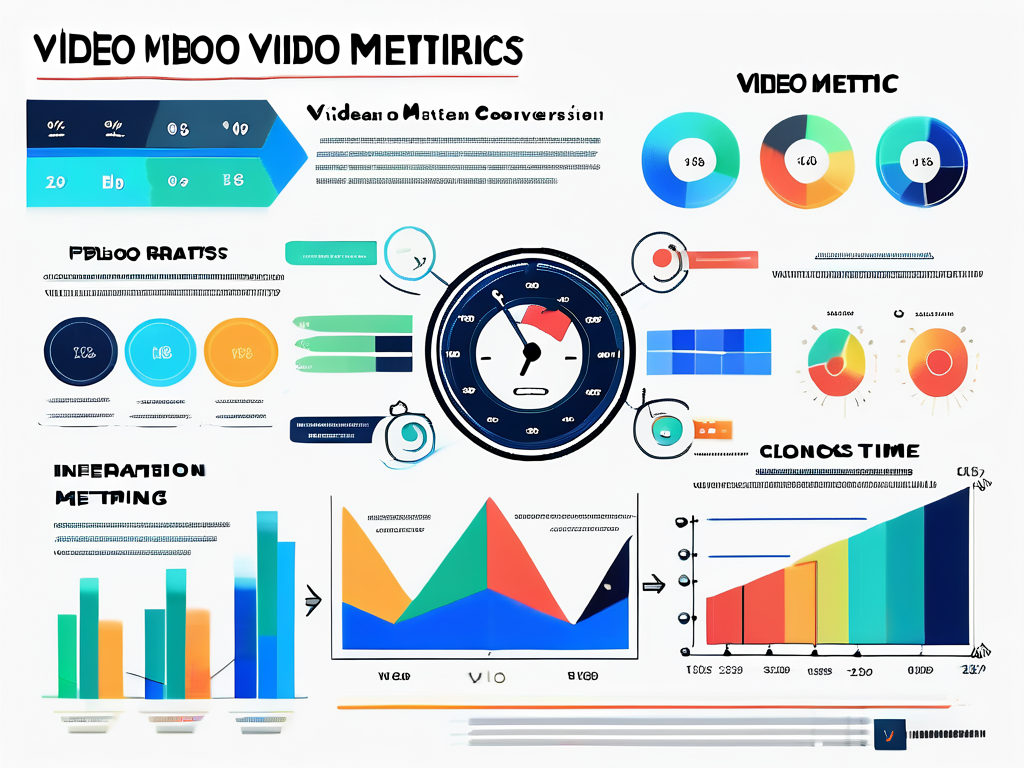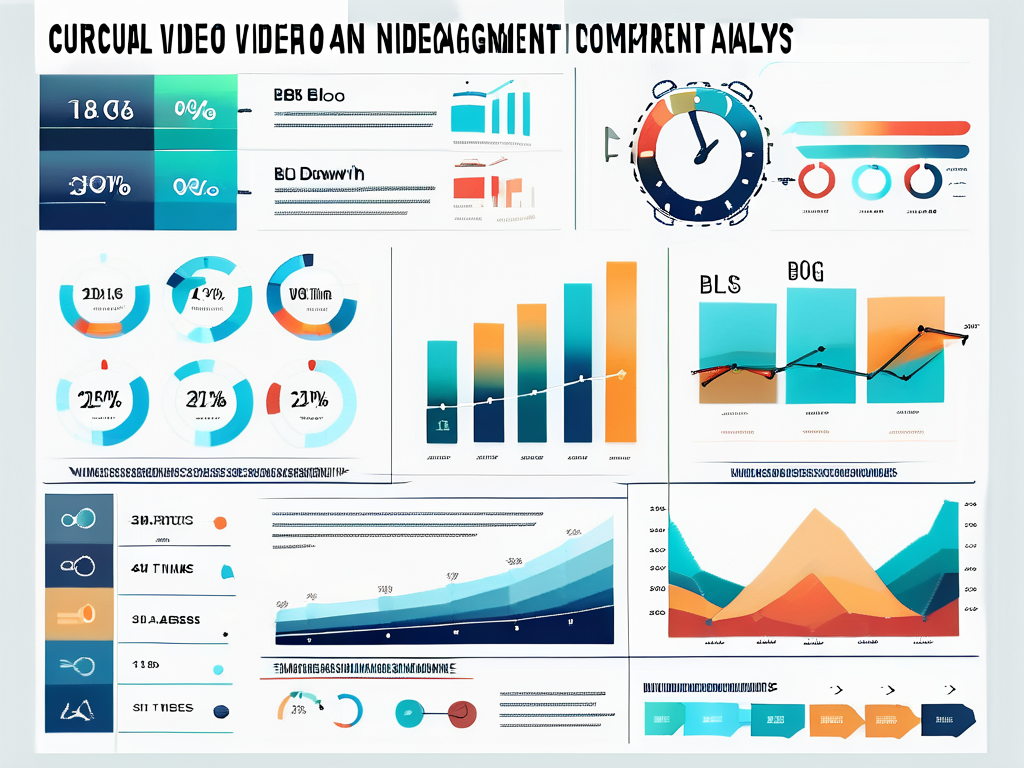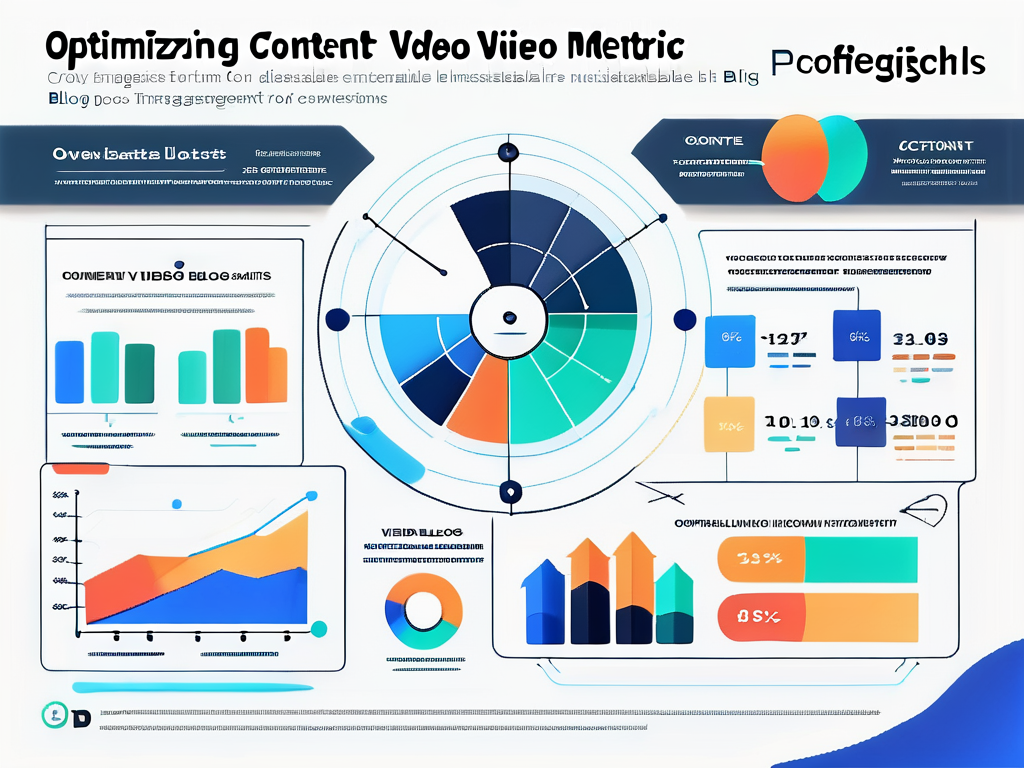Understanding Video Metrics
Video metrics serve as vital indicators of a video's performance and impact. By analyzing these metrics, marketers can gain insights into viewer behavior, preferences, and engagement levels. This data-driven approach allows for more strategic decision-making in future video projects.
The Importance of Video Metrics
Understanding video metrics is crucial for any organization aiming to achieve better engagement and conversion rates. Metrics allow businesses to quantify their efforts, providing tangible evidence of how well their content resonates with the target audience. This helps in optimizing future campaigns and ultimately leads to increased ROI. Moreover, tracking metrics over time can reveal trends that inform not just video content but broader marketing strategies, allowing companies to pivot quickly in response to changing viewer preferences.
How Video Metrics Influence Performance
Each metric tells a different story and highlights various aspects of performance. For instance, a high view count may suggest that your video has garnered interest, but without analyzing play rates and conversion rates, the true effectiveness of the video could be misunderstood. Metrics are interconnected, and a comprehensive analysis encourages a more nuanced understanding of overall performance. Additionally, metrics such as audience retention rates can provide valuable insights into which segments of the video are most engaging, allowing creators to refine their storytelling techniques and maintain viewer interest throughout the entire piece. By focusing on these details, marketers can craft videos that not only attract viewers but also keep them engaged and encourage them to take desired actions, such as subscribing or making a purchase.

The Four Crucial Video Metrics
While there are numerous metrics to consider, four stand out as particularly critical for assessing video performance. These include view count, play rate, social sharing, and conversion rate. Each of these metrics holds significant weight in understanding how your video is accomplishing its goals.
View Count: More Than Just Numbers
The most straightforward metric to track is the view count. However, it's important to go beyond the numbers. A high view count may look good on the surface, but it reveals little about viewer engagement and retention. Understanding the context of these views is critical, whether they come from organic search, shares, or paid ads. For instance, a video that garners a significant number of views from a paid campaign may not necessarily translate into meaningful engagement if viewers drop off quickly. Therefore, it's essential to analyze the source of the views to better tailor your content strategy.
Play Rate: The First Impression Metric
Play rate, defined as the percentage of people who clicked play on your video compared to those who viewed the thumbnail, serves as an essential first impression metric. A low play rate may indicate that your thumbnail or title isn’t compelling enough. Optimizing these elements can dramatically impact whether viewers take action to watch. Additionally, experimenting with A/B testing for different thumbnails and titles can provide valuable insights into what resonates best with your audience. This iterative approach not only enhances the play rate but also contributes to a more engaging viewer experience overall.
Social Sharing: The Virality Factor
Social sharing is another key metric that reflects your video's virality. If your content is shareable, it indicates that your audience finds it valuable, entertaining, or informative enough to pass along to others. Monitoring shares across platforms not only lets you gauge popularity but also helps identify the demographics that are engaging with your content. Furthermore, analyzing the context in which your video is shared can provide insights into trending topics or themes that resonate with your audience. This information can be invaluable for future content creation, ensuring that your videos remain relevant and engaging.
Conversion Rate: The Ultimate Goal
Ultimately, the conversion rate is the metric that businesses care about most. It indicates how successfully a video prompts viewers to take a specific action, whether making a purchase, signing up for a newsletter, or downloading an app. Analyzing conversion rates helps in measuring the video's success against your goals. Moreover, understanding the viewer journey leading up to the conversion can uncover potential bottlenecks or areas for improvement. For instance, if viewers are watching the video but not converting, it may be worth revisiting the call-to-action or the value proposition presented within the video. This deeper analysis can lead to more effective video marketing strategies and ultimately drive better results for your business.

Interpreting Video Metrics for Performance Enhancement
Interpreting video metrics accurately is essential for enhancing video performance. This section will provide insights on how to make sense of the data collected. Understanding what these figures mean will inform your future content creation strategies. By analyzing metrics such as watch time, audience retention, and engagement rates, you can gain a clearer picture of how your content resonates with viewers and where adjustments may be needed to optimize performance.
Making Sense of the Data
To leverage video metrics effectively, it's crucial to look beyond surface-level data and interpret trends over time. For instance, if your view count is rising, but the conversion rate is flat, it may signal that while people are interested enough to watch, they are not compelled to act. Contrarily, a high play rate but low view count could indicate that your distribution strategy is lacking. Additionally, examining audience demographics can provide deeper insights into who is engaging with your content. Understanding the age, gender, and location of your viewers can help tailor your messaging and content style to better suit your target audience, ultimately driving higher engagement and conversion rates.
Translating Metrics into Actionable Insights
Once you've interpreted the data, the next step is to translate these insights into actionable changes. If your play rate is low, consider experimenting with different thumbnails or revising your title to make it more engaging. Always look to create a loop for continuous learning and improvement based on the data collected. Moreover, utilizing A/B testing can be particularly effective; by comparing different versions of your video or promotional materials, you can identify which elements resonate most with your audience. This iterative approach not only enhances your current video performance but also builds a foundation for more effective content creation in the future. Remember, the goal is to create a feedback loop where each video informs the next, allowing for ongoing refinement and increased viewer satisfaction.
Optimizing Video Content Based on Metrics
When you know what metrics matter most, it becomes easier to optimize your video content. Strategies can be crafted specifically to enhance performance, focusing on areas that need improvement. Understanding the nuances of viewer engagement, retention rates, and demographic insights can guide your content creation process, ensuring that each video resonates with your target audience. By continuously analyzing these metrics, you can adapt your approach, making informed decisions that lead to more impactful video campaigns.
Improving View Count and Play Rate
To improve view count and play rate effectively, you can employ tactics such as A/B testing different video thumbnails, titles, and descriptions. Additionally, leveraging SEO techniques will help your video appear in organic searches. Ensure to promote your video across various platforms to maximize reach and visibility. Collaborating with influencers or industry leaders can also expand your audience base, as their endorsement can lend credibility and attract new viewers. Moreover, consider the timing of your video releases; posting during peak engagement hours can significantly impact initial view counts and overall performance.
Boosting Social Sharing and Conversion Rate
Creating shareable content is fundamentally about offering value to the viewer. Incorporating calls-to-action that resonate with viewers can also dramatically improve conversion rates. Engaging audiences through compelling storytelling and relatable content increases the probability of users sharing your video. Additionally, utilizing interactive elements such as polls, quizzes, or viewer challenges can enhance viewer participation and encourage them to share their experiences with friends and followers. By fostering a sense of community around your content, you not only boost social sharing but also cultivate a loyal audience that is more likely to convert into customers.

The Future of Video Metrics
As technology evolves, so do video metrics. Emerging trends suggest a continual shift towards more refined measurement techniques that can provide deeper insights into viewer behavior and preferences. With the rise of interactive video content and the increasing integration of augmented reality, the landscape of video metrics is becoming more complex yet more rewarding for those who can navigate it effectively.
Emerging Trends in Video Performance Measurement
One trend is the growing emphasis on viewer engagement metrics rather than just raw view counts. Businesses are beginning to prioritize metrics such as watch time and average viewer retention, recognizing these as more indicative of a video’s impact. Additionally, AI and machine learning are facilitating more nuanced understandings of viewer patterns. For instance, predictive analytics can now forecast which types of content are likely to resonate with specific demographics, allowing marketers to tailor their strategies more effectively. Furthermore, the integration of social media sharing metrics is becoming increasingly important, as it provides insight into how content is being disseminated across platforms and the organic reach it achieves.
Preparing for Changes in Video Metrics
It's essential for marketers to stay abreast of changes in video metrics. As algorithms and viewer behaviors evolve, so must your strategies. Regularly updating your measurement techniques and adapting to new trends will help ensure that your video marketing remains effective and relevant. This might involve investing in advanced analytics tools that can track multi-platform performance or incorporating A/B testing to refine content based on real-time feedback. Additionally, understanding the impact of mobile viewing habits is crucial, as an increasing number of viewers consume video content on their smartphones. This shift necessitates a reevaluation of video formats and lengths to cater to on-the-go audiences, ensuring that every second of content is optimized for engagement and retention.
As you refine your video marketing strategies with the insights from these essential metrics, consider the impact of partnering with the right agencies and service providers to elevate your content. Refetrust is here to guide you through that crucial selection process. Our platform offers a comprehensive database of vetted agencies, complete with verified user reviews and transparent rankings to ensure you make informed, strategic decisions that foster growth. Take the first step towards optimizing your video content and enhancing your marketing performance. Find Agencies today and unlock the full potential of your video marketing efforts with the perfect partnership through Refetrust.





